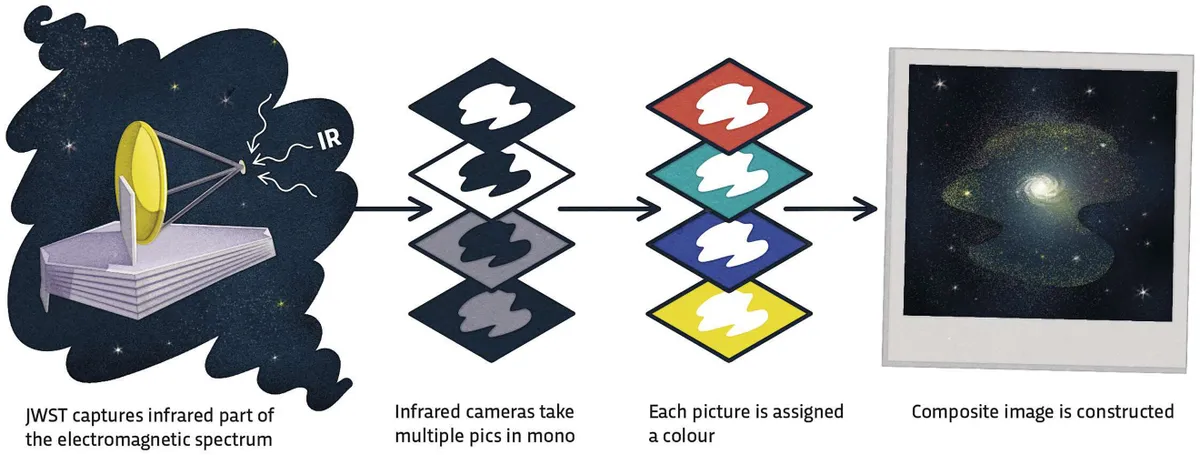This July we were treated to the first spectacular images taken with NASA’s James Webb Space Telescope (JWST). But JWST is an infrared (IR) telescope, meaning that it is not seeing what the human eye sees. In fact, JWST is detecting what we feel as ‘heat’, just like night-vision goggles, and the JWST images are just a representation of its view in optical light. So, the colours in the JWST image are not real – they are not what your eye would see.
The colours, however, do represent something real — the variation in brightness with wavelength. Essentially,theJWST takes up to 29 greyscale images, each through a different filter which only passes IR light of a certain wavelength.
The separate images are then assigned a colour; the longest wavelength is ‘red’ and the shortest ‘blue’, with the others in between. The ‘colour’ imageis then formed from combining the separate filter images.
In effect, the JWST’s images are shifted up the electromagnetic spectrum from a part we can’t see (IR) into the part we can see (optical).

Incidentally, this is how the images from the Hubble Space Telescope are formed, but in that case, the filters are all at optical wavelengths and no shift is being performed.
If the JWST colour images are not real, why make them? It’s easier for scientists to analyse the images using these composite ‘false-colour’ images, and it’s aesthetically pleasing to ‘see’ a representation of what JWST has observed.
Read more:
- What’s so special about the James Webb Space Telescope’s new images? We asked the experts
- What colour is space?
- If we made a powerful enough telescope, would we theoretically be able to see the light from the Big Bang?
- What colour is the Sun really? Hint: it’s not yellow
Asked by: Benjamin Marsh, via email
To submit your questions email us at questions@sciencefocus.com (don't forget to include your name and location)
